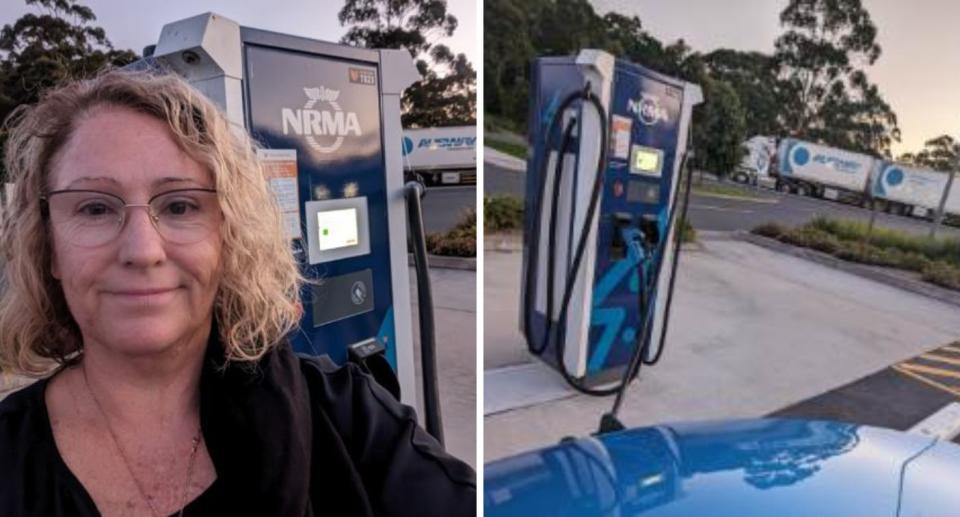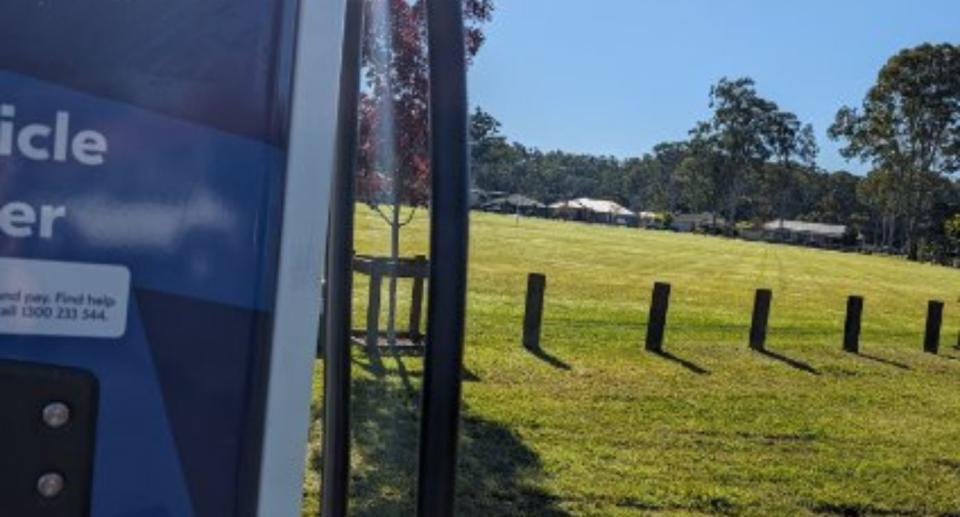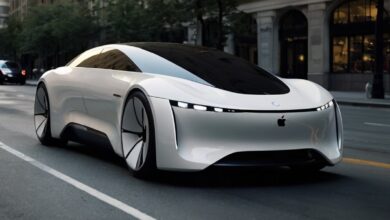EV driver sounds alarm on ‘scary’ charging station issue

An Aussie EV driver has shared the sometimes unsettling reality of going on a road trip as a solo woman, saying she often felt stranded at remote charging stations which were sometimes dark and lacked basic amenities like toilets and mobile coverage. When she embarked on her 800km interstate drive, Mere Jans didn’t expect to be confronted with so many obstacles.
Jans said her experience driving from her home in Ipswich, Queensland to Toronto, NSW to visit family highlights the difficulties EV drivers can potentially still face on Australian roads as infrastructure is still catching up with the booming popularity of the vehicles. The experience often left her feeling like a “second-class citizen,” she said.
At one point in her journey, she was left stranded trying to charge her car in the dark when one charging station didn’t have working internet, which meant she couldn’t connect to a charger through an app. “This was annoying… it added an hour to my trip as I could not get it to work,” Jans told Yahoo News Australia.
She said she’d ordered an Evie Pass RFID card, which lets drivers connect to chargers without using their phone, but it hadn’t arrived before she was due to leave so she was relying on her mobile network which didn’t always work in remote locations.

Luckily her long-range MG EV ZS had enough power to get to the next station at Naibac near Taree on the NSW mid-north coast but it was in the “middle of nowhere” and by the time she arrived, it was dark. The nearby town’s shops were all shut and the spot felt “a bit scary” for a woman on her own.
As each station could be run by different companies such as the NRMA or BP, without an Evie card, drivers need to download an app to use each charger, which Jans hadn’t done prior to arriving.
She said many chargers were also located at the back of service stations near truck stops and away from eateries, shops, toilets or bins. As it can take 20 minutes to charge an EV, Jans said it was very frustrating being stuck in a remote spot with no amenities nearby.
‘Preparation is key’ when travelling solo
Preparation is key when travelling in an EV, and if going solo, Jans says make sure you plan ahead to ensure you’re not stuck at a remote charger late at night.
On the plus side, while costs varied from 25 cents at some stations up to 60c per kilowatt at some NRMA chargers — which charge at twice the speed — Jans said the return trip cost a mere $150, a fraction of the price you’d pay in petrol.


She added there was also an etiquette in using the charging stations whereby you “check in” so if all the chargers were in use, other drivers could see that beforehand which might save them a wasted trip.
Jans said EV owners were like a community, connecting through social media and if someone was experiencing difficulty at a charger, they helped each other out or offer advice. “We are pioneers, others will be learning from us one day,” she joked.
Better amenities will come as more drivers switch to EV
Ross De Rango, head of energy and infrastructure at the Electric Vehicle Council, said government grants for public charging sites often included funding for nearby amenities and adequate lighting.
“As the sector matures, it’s reasonable to expect that public charging sites will increasingly have amenities nearby because that’s what drivers will expect,” he told Yahoo News.
He said government and industry needed to work together to ensure the right mix of charging stations were built in a timely manner and added there were multiple online tools to help drivers find chargers and plan their trips including Plugshare and A Better Route Planner.
NRMA prioritises safety at charging stations
An NRMA spokesperson said it encouraged all EV drivers to check the My NRMA App which provides current information on the availability of chargers — which are mostly unmanned — on the network.
“NRMA seeks to build its EV chargers close to public amenities, local businesses and tourist destinations,” they said. “Due to the regional focus of our network, some chargers have to be built in more remote locations.
“The NRMA prioritises the safety of customers while charging. To bolster safety at regional charging sites, we’ve implemented tailored solutions to each site such as extra lighting and surveillance cameras.”
The spokesperson said the NRMA’s EV pricing remained competitive and billed customers based on charging speed, while De Rango said the cheapest way to power an EV was home solar panels.


Some regional chargers are ‘tucked’ away and can be ‘creepy’
After writing about her trip on social media, others were quick to agree that amenities at charging stations were sorely lacking.
“Yes, it all needs a massive upgrade. Petrol/diesel so much easier,” one person wrote on Facebook.
“Plugshare helps with stations that are out of order and trip planning. A lot of regional chargers are tucked out of the way and can be a bit creepy. I plan my trips so I only recharge during the day,” a female motorist added.
“Many need lighting, shelter, rubbish bins, squeegees,” another driver wrote. “All of the things you take for granted at a petrol servo.”
Do you have a story tip? Email: newsroomau@yahoonews.com.
You can also follow us on Facebook, Instagram, TikTok, Twitter and YouTube.




